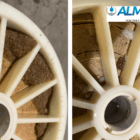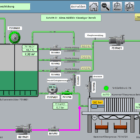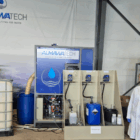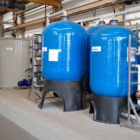A microfiltration system is a special treatment unit that is used to remove particles, colloids and microorganisms from water or wastewater. These systems use microfiltration membranes with a pore size of 0.1 to 10 micrometers. They provide an effective barrier against suspended solids, bacteria and algae, while allowing dissolved salts and smaller organic molecules to pass through.
Table of contents
Structure and mode of operation
Core components
- Membranes: Manufactured from polymers such as polyethersulfone (PES), polyvinylidene fluoride (PVDF) or ceramic. These membranes are available as hollow fiber modules, flat membranes or ceramic elements.
- Pumps: Microfiltration systems operate at a low pressure of 0.1 to 2 bar, which enables energy-efficient operation.
- Control and monitoring: Automated systems regulate the operating pressure, flow rate and backwash cycles.
- Cleaning systems: Regular backwashing and cleaning-in-place (CIP) systems prevent fouling and extend the service life of the membranes.
Operating principle
The raw water is passed through the membranes, where particles and microorganisms are retained. Purified water (permeate) enters the production cycle or is subjected to further treatment processes. Backwash cycles remove the accumulated solids from the membrane surface.
Technical background
Microfiltration systems separate particles through a combination of sieving action and surface filtration. They work at low pressures, which reduces energy consumption and makes operation economical. Regular backwashing ensures that the pores of the membranes remain clear and the filtration performance remains consistently high.
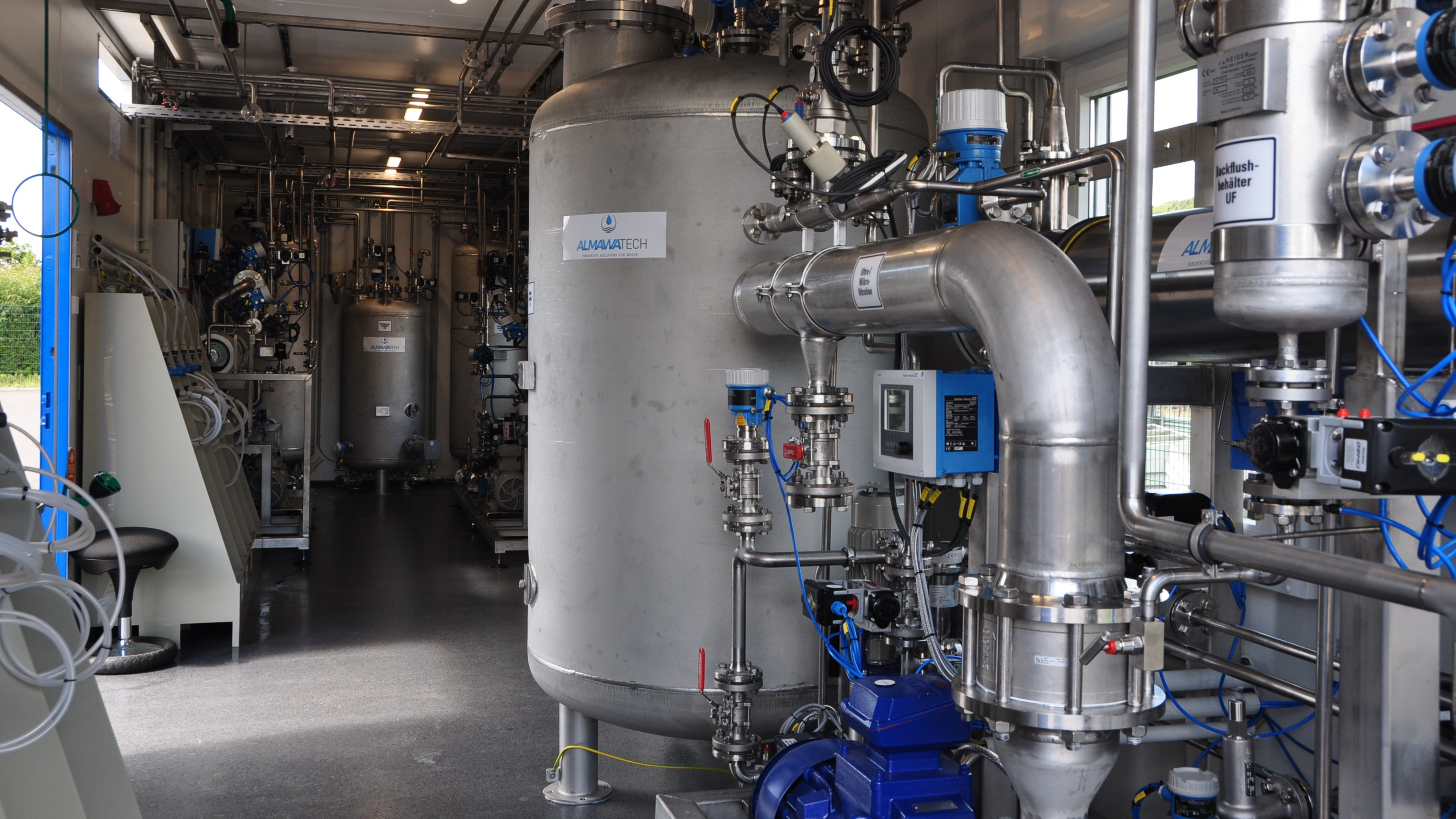
Photo: ALMA Mem UF microfiltration module in stainless steel design, installed in the ALMA Modul technical room container
Areas of application
Drinking water treatment
- Removal of bacteria, parasites and turbidity to ensure water quality.
Food and beverage industry
- Clarification of products such as beer, wine and milk to ensure consistent product quality.
Pharmaceutical industry
- Provision of high-purity water for the production of pharmaceuticals.
Waste water treatment
- Used in membrane bioreactors (MBR) for the separation of biomass and purified water.
Swimming pools and leisure industry
- Removal of suspended solids and organic compounds for water treatment in pools and spas.
Electronics and semiconductor industry
- Provision of ultrapure water, which is required for the production of sensitive electronic components.
Advantages
- High separation performance: Effectively removes microorganisms and suspended solids.
- Energy efficiency: Works at low operating pressure, which reduces operating costs.
- Versatility: Can be used in a wide range of industries.
- Modular design: Systems can be flexibly expanded or adapted to specific requirements.
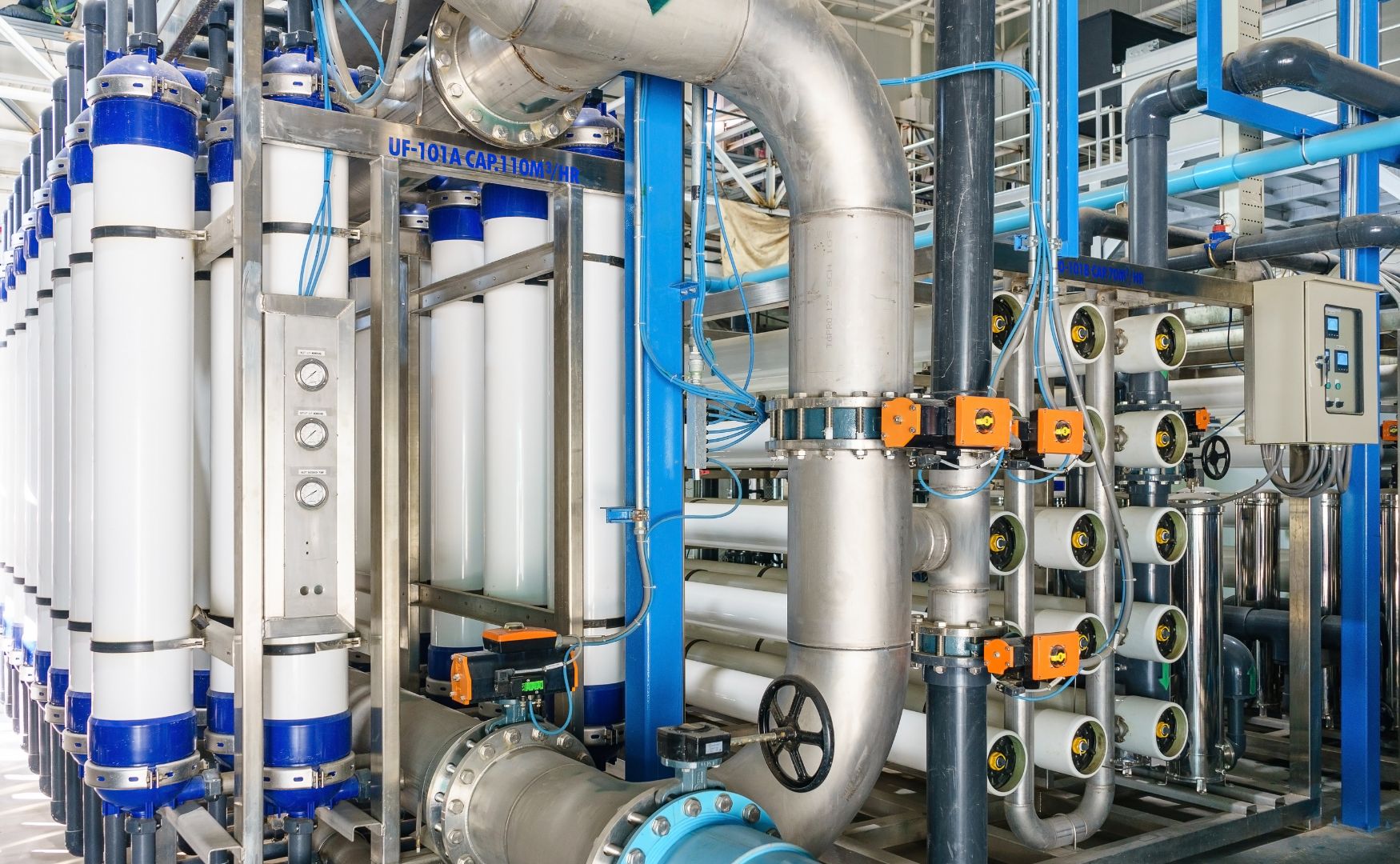
Photo: Individual ALMA MEM UF microfiltration systems for industrial water treatment
Challenges
- Fouling: Deposits of organic substances or microorganisms can impair the membrane performance.
- Scaling: Precipitation of salts such as calcium carbonate can lead to blockages.
- Regular cleaning: Regular cleaning cycles are necessary to ensure the efficiency of the system.
ALMAWATECH solutions
ALMAWATECH offers customized microfiltration systems that are tailored to the specific requirements of the customer. Our plants are equipped with state-of-the-art control systems and enable efficient water treatment with low maintenance. We also offer pilot tests to determine the optimum configuration of the system for individual requirements.
Conclusion
Microfiltration systems are a key technology in modern water and wastewater treatment. They offer an effective and economical solution for removing suspended solids and microorganisms and are indispensable in numerous industries. Their high efficiency and versatility make them a cornerstone of sustainable water treatment systems.
For further information on our products, please feel free to contact us at any time!


